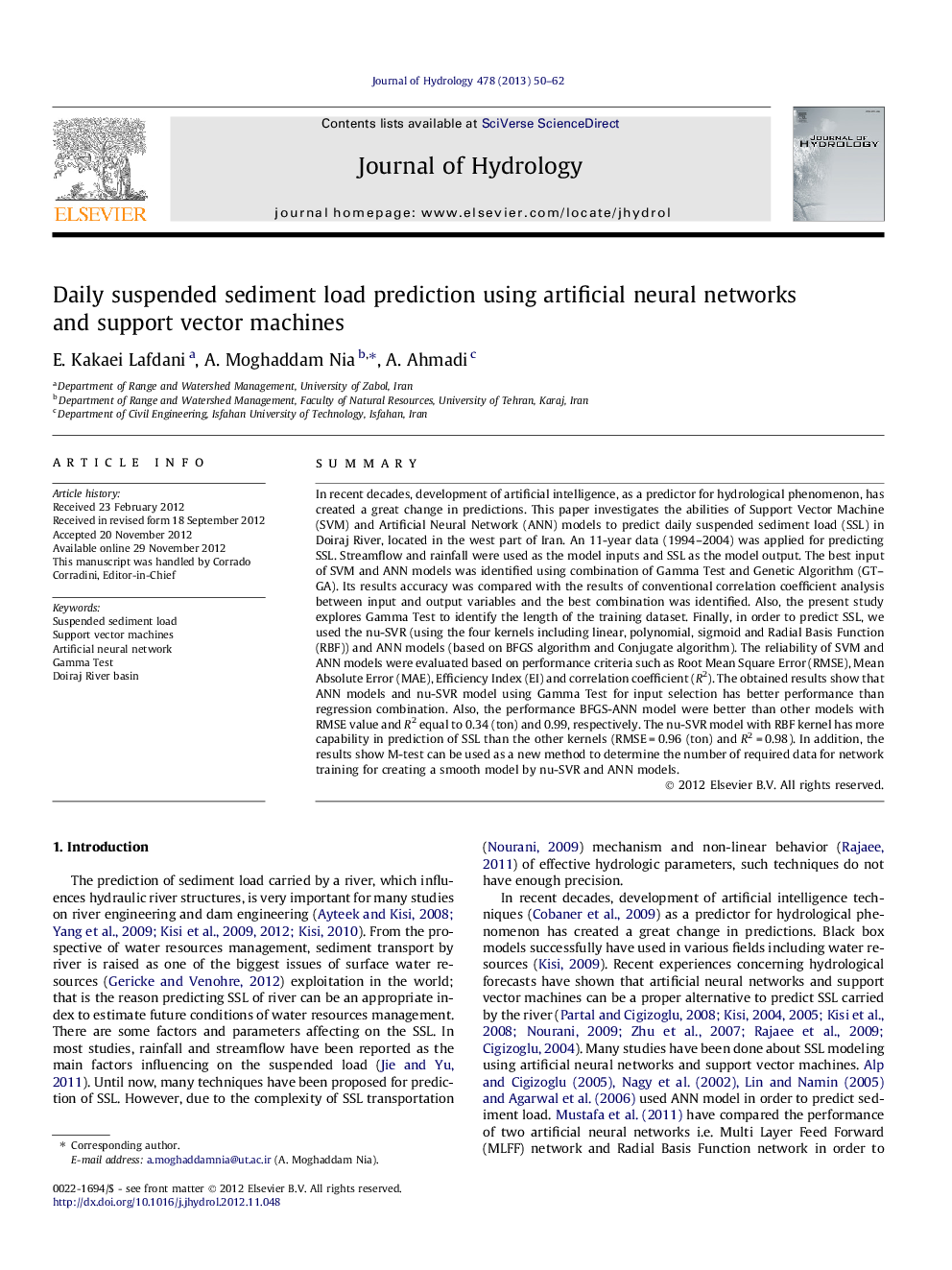| Article ID | Journal | Published Year | Pages | File Type |
|---|---|---|---|---|
| 4576530 | Journal of Hydrology | 2013 | 13 Pages |
SummaryIn recent decades, development of artificial intelligence, as a predictor for hydrological phenomenon, has created a great change in predictions. This paper investigates the abilities of Support Vector Machine (SVM) and Artificial Neural Network (ANN) models to predict daily suspended sediment load (SSL) in Doiraj River, located in the west part of Iran. An 11-year data (1994–2004) was applied for predicting SSL. Streamflow and rainfall were used as the model inputs and SSL as the model output. The best input of SVM and ANN models was identified using combination of Gamma Test and Genetic Algorithm (GT–GA). Its results accuracy was compared with the results of conventional correlation coefficient analysis between input and output variables and the best combination was identified. Also, the present study explores Gamma Test to identify the length of the training dataset. Finally, in order to predict SSL, we used the nu-SVR (using the four kernels including linear, polynomial, sigmoid and Radial Basis Function (RBF)) and ANN models (based on BFGS algorithm and Conjugate algorithm). The reliability of SVM and ANN models were evaluated based on performance criteria such as Root Mean Square Error (RMSE), Mean Absolute Error (MAE), Efficiency Index (EI) and correlation coefficient (R2). The obtained results show that ANN models and nu-SVR model using Gamma Test for input selection has better performance than regression combination. Also, the performance BFGS-ANN model were better than other models with RMSE value and R2 equal to 0.34 (ton) and 0.99, respectively. The nu-SVR model with RBF kernel has more capability in prediction of SSL than the other kernels (RMSE = 0.96 (ton) and R2 = 0.98). In addition, the results show M-test can be used as a new method to determine the number of required data for network training for creating a smooth model by nu-SVR and ANN models.
► We identify the most effective variables on prediction in order of importance degree. ► We select the best combination of model inputs for predicting suspension load. ► We determine how many data is considered for training of ANN and SVM models.
